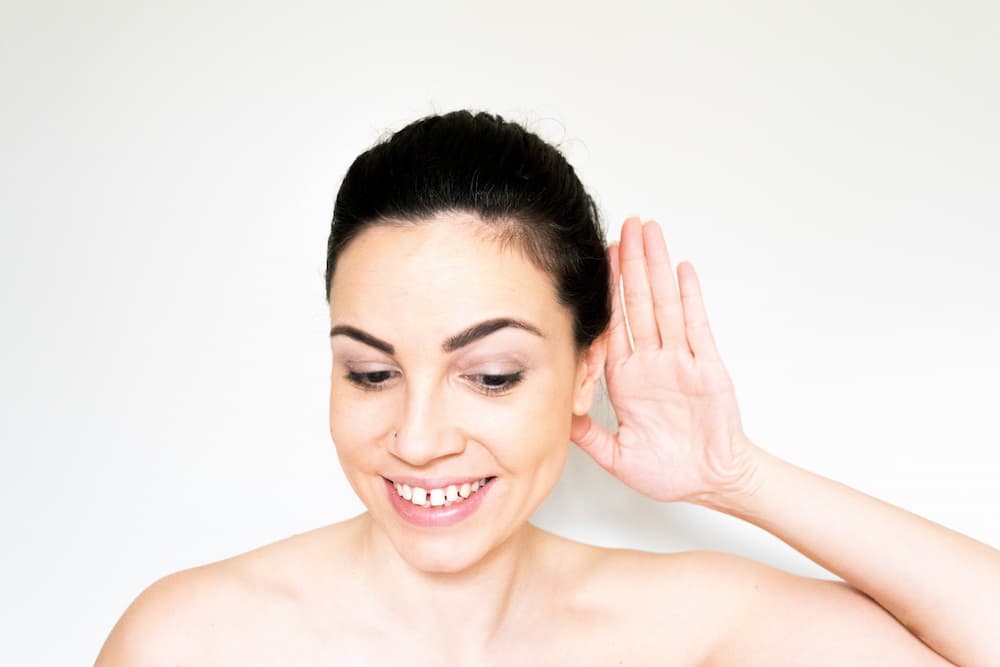One of the most common questions we receive around the topic of earwax removal is whether ear wax should be removed at all and, if so, when? The problem is that it’s not as straightforward as just ‘yes’ or ‘no’. Whether ear wax should be removed varies from person to person and how often it should be removed is different for everyone.
Luckily, the registered nurses at Earworx are experts when it comes to all things ear wax and ear health, so we can help you decide if you need your ear wax removed and if so, we can remove it in a safe, gentle and effective way.
When to Remove Earwax
One of the most common misconceptions about ear wax is that it is ‘dirty’; our ears should be perfectly clean at all times; and that any and all ear wax should be removed. This myth isn’t helped by the common misconception that you can safely use cotton buds to get rid of your wax. Ear wax is actually an essential part of your ear health, as it traps dirt, dust or any other unwanted particles from entering your ear canal and damaging your delicate ear canals and drums. It also lubricates and protects your ear canals, and even helps to prevent infection.
Furthermore, there is generally no need to remove ear wax manually because the skin of your ear canals forms a ‘conveyor belt’ mechanism that transports wax and dirt to your outer ear where it falls away discretely or can be wiped away. When you insert things like cotton buds or even your fingers into your ear canal, you can actually damage your canal or drum or push wax deeper into your ear, preventing the wax from coming out naturally, and causing wax impaction. This impaction can be extremely uncomfortable as it can cause symptoms such as:
- A feeling of fullness
- Hearing loss
- Itchiness
- Discharge
- Tinnitus
- Pain
- Odour
- Cough
What Causes Wax Build-Up?
Wax build-up and impaction can be caused by a variety of factors, including:
- Wearing hearing aids during the day
- Inserting ear plugs during the night
- Wearing ear buds
- Genetic disposition to producing excessive earwax
- Working in a dusty or dirty environment
- Suffering from stress
Some groups of people are more prone to excessive wax production. For example, wax production increases as you get older, which means elderly people are more likely to experience wax impaction. This is often compounded by the use of hearing aids.
At-Home Earwax Removal Methods
When it comes to ear wax removal techniques, misinformation abounds! Many home remedies can be ineffective also potentially dangerous.
One of the most common tools people use to get rid of ear wax is cotton buds, but these can often impact the ear wax further and even damage your delicate eardrums. Similarly, ear candling can make your blocked ear worse and health professionals advise against putting any kind of heat like a flame near your ears.
Ear wax softening drops, which can be found at most local chemists, can help to provide temporary relief by softening your wax and encouraging the self-cleaning mechanism to work more effectively. They are a good first line option to try, but we aware they may only partially remove the wax blockage or just create a temporary gap, meaning the feeling of blockage may shortly return. Wax softening drops are not safe for everyone and should not be used if you have a perforated ear drum or a current ear infection. It is advised that you consult a health professional before use if you are unsure.
The Best Removal Method
By far the most safe, effective and efficient method of earwax removal is micro-suction. Micro-suction is practiced by the registered nurses at Earworx and is one of the most gentle techniques to relieve wax blockages and provide you with relief.
The micro-suction process begins with you filling out a confidential questionnaire regarding your ear history and health. Your ears are then examined to determine whether wax removal is necessary. This inspection is performed with a speculum and loupes; magnifying glasses fitted with a bright light. If it is concluded that you have enough wax to perform micro-suction, the procedure will be explained to you and you will have the opportunity to ask any questions.
The micro-suction procedure will then begin. This involves a very small micro-suction catheter, which is attached to suction tubing, being inserted directly into your ear canal. The machine will then gently remove the wax from your ear using suction, much like a tiny vacuum cleaner. You will hear the noise of the suction but the procedure is gentle and painless. Throughout the entire procedure, the nurse will be carefully monitoring your ear canal and eardrum with loupes to ensure your safety.
Contact Earworx Today
If you have any more questions about earwax removal, feel free to contact our friendly staff or book an appointment online.





